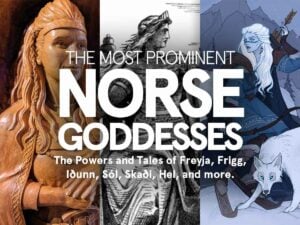
Whereas most individuals are very conversant in Norse gods like Odin and Thor (thanks, Marvel), the tales of the equally fascinating goddesses of the Norse myths may not be as acquainted. So on this article, we’ll discover the sagas, areas of affect, and powers of those fascinating deities; briefly, every part it’s worthwhile to know in regards to the Viking Age goddesses of Norse mythology.
Remember that Norse deities seldom maintain unique areas of affect (for instance, there are quite a few “goddesses of fertility”), and that they typically are related to many various areas (Freyja is for instance linked with something from fertility, magnificence, and love, to battle, demise, and magic).
- Freya – Goddess of Love, Intercourse, Magnificence, Battle & Seiðr Magic
- Frigg – The Almighty Queen of Asgard
- Skaði – Goddess of Winter, Mountains & Searching
- Sól/Sunna – Goddess of the Solar & Daughter of Evening
- Jörð – Goddess of Nature and Earth, Lover of Odin, Mom of Thor
- Sif – Goddess of Fertility and Abundance
- Iðunn – Goddess of Spring, Youth, Apples, and Renewal
- Gefjun – Goddess Of Plowing, Agriculture & Safety
- Saga – Goddess of Information & Water
- Eir – Goddess of Therapeutic & Medication
- Sjöfn – Goddess of Sexual Need
- Lofn – Goddess of Kindness, Love & Marriage
- Vár – Goddess of Guarantees, Oaths & Marriage
- Vör – Goddess of Curiosity, Knowledge & Certainty
- Syn – Goddess of Refusal, Safety & Guardian of Valhalla
- Hlín – Goddess of Safety & Surveillance
- Snotra – Goddess of Knowledge, Politeness, Refinement & Respectability
- Hel – Goddess of Demise and Ruler of the Damned within the Underworld
- Sigyn – Goddess of Devotion and Spouse of Loki
- Fulla – Goddess of Fates and Sister of Frigg
- Gna – Goddess of Rumours and Messages
- Frequent Questions In regards to the Norse Goddesses
- Who’s probably the most highly effective Norse goddess?
- Who’s probably the most lovely Norse goddess?
- What number of Norse goddesses are there in whole?
- Are Freyja and Aphrodite in the end the identical deity?
Freya – Goddess of Love, Intercourse, Magnificence, Battle & Seiðr Magic
Freyja, alternatively spelled as Freya or Freja, actually means “the Girl” in Previous Norse, and is probably going probably the most identified and distinguished goddess in Norse mythology, and she or he is usually related to quite a few areas of affect, together with love, fertility, magnificence, intercourse, battle, and seiðr magic.
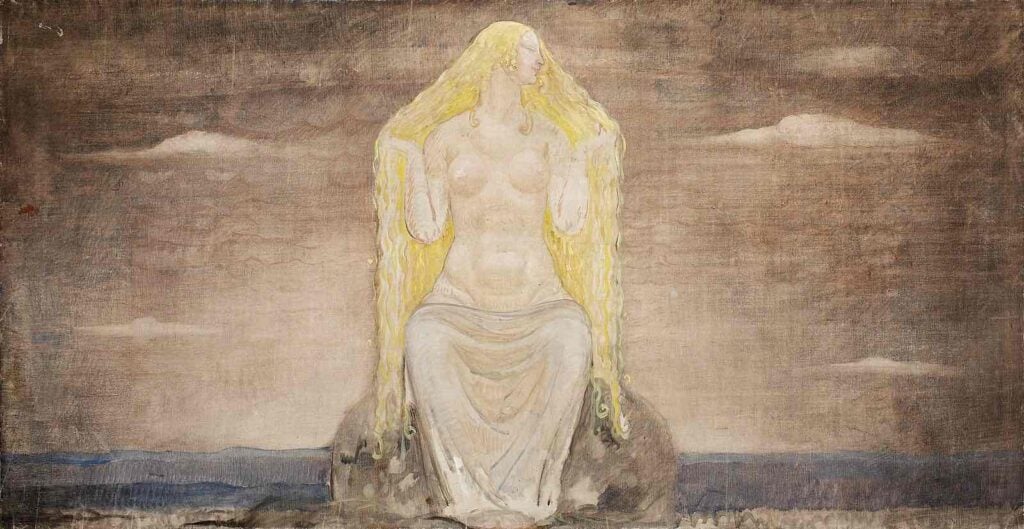
She is the one feminine Vænir deity named within the sagas, and is taken into account to be a pre-eminent goddess, famend for her magnificence, allure, and sensuality.
The sixth is Freyja, who’s ranked with Frigg. She is wedded to the person whose identify is Odin; their daughter’s identify is Hnos, and she or he is so honest that each one issues honest and valuable are known as, from her identify, Hnos. Odin went distant. Freyja weeps for him, however her tears are purple gold. Freyja has many names, and the rationale therefor is that she modified her identify among the many varied nations to which she got here in the hunt for Odin. She is known as Mardol, Horn, Gefn, and Syr. She has the necklace Brising, and she or he is known as Vanadis.
Gylfaginnig within the Prose Edda by Snorri Sturluson
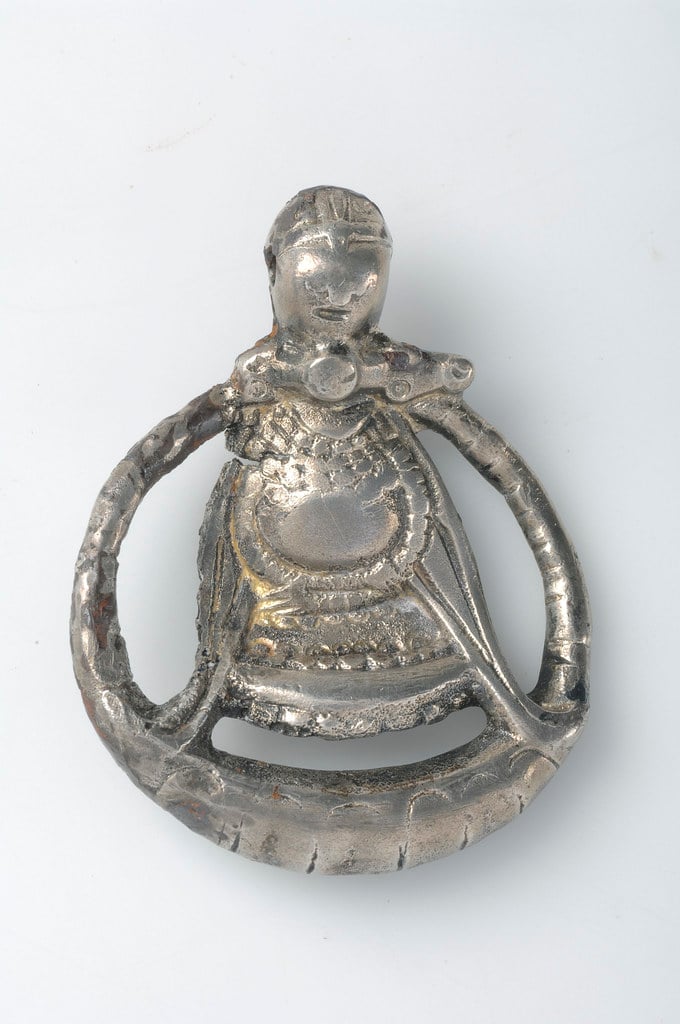
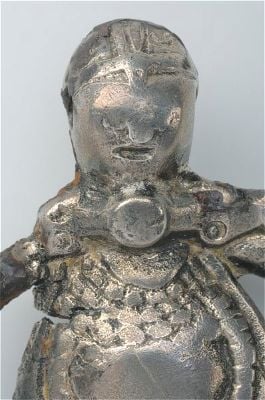 A silver pendant of Freya from the Viking Age, present in Aska, Östergötland, Sweden. Photograph: The Swedish Historical past Museum, Stockholm is licensed beneath CC BY 2.0.
A silver pendant of Freya from the Viking Age, present in Aska, Östergötland, Sweden. Photograph: The Swedish Historical past Museum, Stockholm is licensed beneath CC BY 2.0.
Freyja was identified to apply Seiðr — a particular type of magic within the age of Vikings — and was an professional in gold-working. She was additionally depicted as a robust warrior who might deliver each victories in battle in addition to blessings in amorous affairs.
Folkvang is known as,
Der Freya guidelines
About seats within the corridor.
The half of the battle she chooses
On every day,
However half Odin owns.Gylfaginnig within the Poetic Edda
And to high of her lengthy checklist of accomplishments, she was additionally stated to have had the ability to resurrect fallen warriors from the lifeless.
Frigg – The Almighty Queen of Asgard
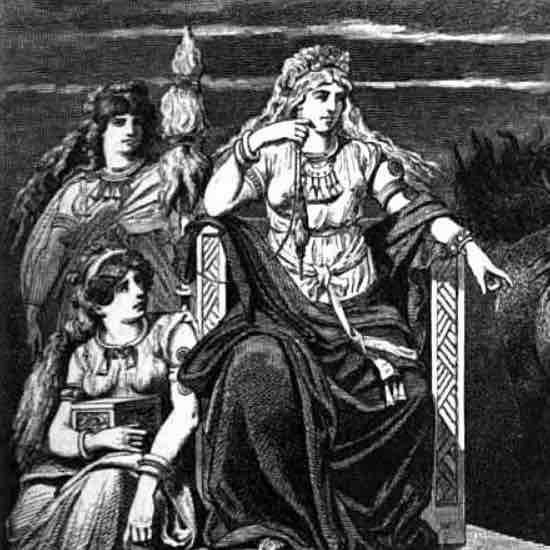 Frigg and her servants
Frigg and her servants
Frigg was the Queen of Asgard, spouse of Odin, and the noblest of the goddesses in Norse mythology. She is married to Odin, her father is Fjorgynn, and her house is known as Fensalir (“corridor of the marshlands”).
Right here is how she is described in Gylfaginnig, the place the Asynjúr are listed:
Frigg is the primary; she possesses the suitable lordly dwelling which is known as Fensaler.
Gylfaginnig within the Prose Edda by Snorri Sturluson
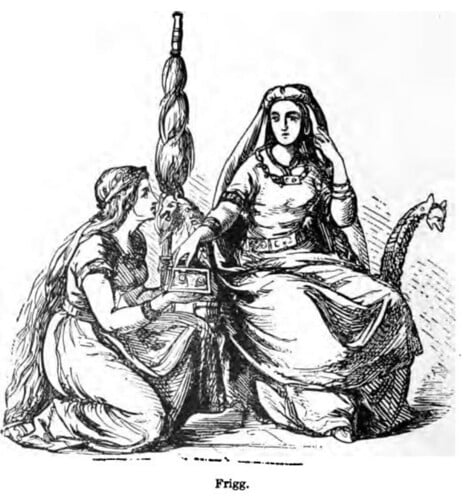
She is a promoter of marriage and motherhood, being herself the mom of Baldr, Hödor and lots of extra. Frigg was additionally believed by Norse moms to be an important protector of youngsters generally, and so they believed she would typically intervene on behalf of them.
Along with her position as a loving mom, Frigg was identified for her knowledge and information; with a eager understanding of destiny that helped her see into each pasts and futures.
Frigg got here to be referred to as “The Beloved” in Previous Norse; her presence introduced pleasure to all who knew her, inspiring power in those that have been weak, hope in those that have been misplaced, and love in those that wanted it most.
Skaði – Goddess of Winter, Mountains & Searching
Skaði is a Norse Jötunn (big) related to winter, snow, searching, snowboarding, and mountains in keeping with the sagas. She is described as strong-willed, lovely, vengeful, and ruthless; having each charmed and poisoned different gods.
In line with Previous Norse perception, she led to winter every year.
Odin described her as “the shining bride of the gods”, and selected her as his spouse after she had break up up together with her first husband Njörðr. And to high all of it off, she is credited with poisoning the ever-scheming dangerous man of Norse mythology; Loki.
Learn extra about Skaði within the in-depth article under:
Sól/Sunna – Goddess of the Solar & Daughter of Evening
Sól was the Norse Goddess of the Solar, and was also referred to as Sunna. In Norse mythology, the solar is believed to be feminine, whereas the moon is male — and each Sol and Mani (i.e. the moon) have been worshipped as deities of safety and victory.
The Previous Excessive German Merseburg Incantations, written within the ninth or tenth century, revealed that Sol was honored not only a goddess of the solar but in addition of safety and victory.
Phol and Wodan have been using to the woods, and the foot of Balder’s foal was sprained So Sinthgunt, Sunna’s sister, conjured it; and Frija, Volla’s sister, conjured it; and Wodan conjured it, as effectively he might: Like bone-sprain, so blood-sprain, so joint-sprain: Bone to bone, blood to blood, joints to joints, so could they be glued.
–Second Merseburg Appeal
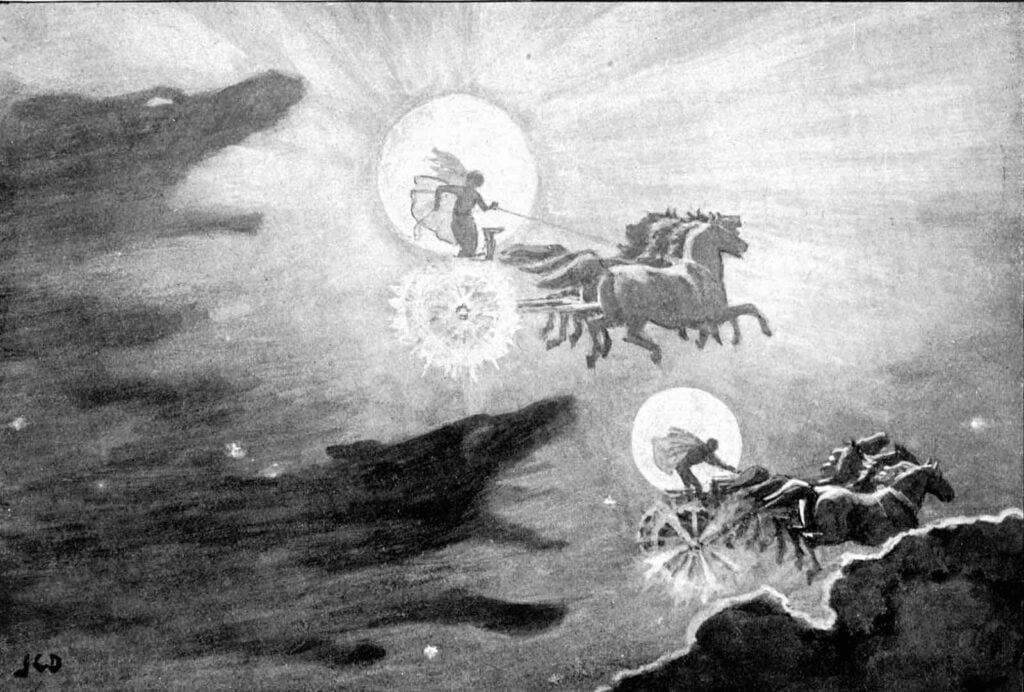
It was believed that she drove throughout the sky every day within the chariot of the solar, known as Alfrödull and created to mild up the worlds, together with her horses Arvaker and Allsvinn. She was chased by Mani’s wolves Skoll and Hati, who have been intent on devouring her.
Sól was additionally identified by names equivalent to Solar-Brilliant, Everglow, and Honest Wheel, and she or he stands out as the mysterious maiden Odin seduces in Hávamál 96-102:
Billing lady I discovered on the mattress, sun-bright, all asleep; a nobleman’s joys have been as nothing to me except I could possibly be with that physique.
Jörð – Goddess of Nature and Earth, Lover of Odin, Mom of Thor
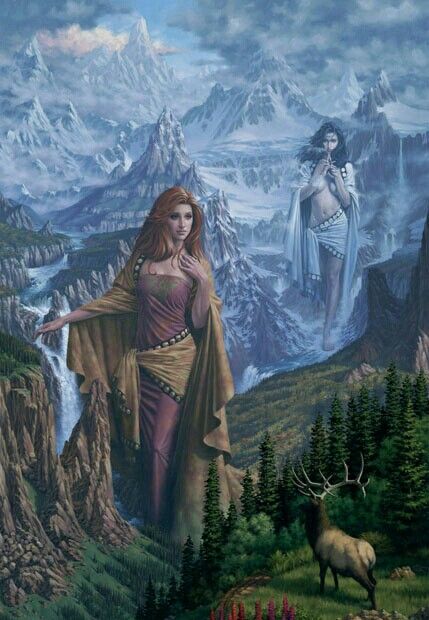
Jörð, additionally known as Fjørgyn and Hlodyn, was in Norse mythology seen because the goddess of nature and earth and sometimes depicted as an exquisite lady with lengthy hair and a mild face. She is the daughter of Annar and Nótt, two giants (Jötunns) who have been married to one another.
How shall earth be referred to? By calling it Ymir’s flesh and mom of Thor, daughter of Onar, bride of Odin, rival of Frigg and Rind and Gunnlod, mother-in-law of Sif, flooring and base of winds’ corridor, sea of the animals, daughter of Evening, sister of Aud and Day
Skáldskaparmál, Prose Edda, Snorri Sturluson
Jörð was one in every of many lovers of Odin the all-father, and the mom of Thor, the thunder god. Thus, she is usually seen as a logo of fertility and abundance and is related to the land and earth itself (jord actually means “earth” in fashionable Swedish).
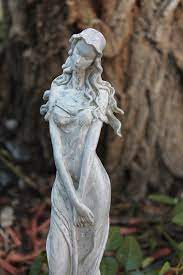
As she was seen as earth itself, she was believed to be accountable for offering meals for all dwelling creatures, and along with being a logo of fertility and abundance, Jörð was additionally seen as a protector of nature and its inhabitants.
Sif – Goddess of Fertility and Abundance
Sif was maybe finest referred to as the spouse of the thunder god Thor and mom of Ullr, god of archery, snowboarding and single fight — however, she was additionally an vital fertility goddess, related to the Earth’s abundance and nourishment.
Her story is intertwined with that of the ever-mischievous trickster Loki, who as soon as minimize off her golden locks and was pressured to interchange them with new ones constituted of gold. Sif’s position in Norse mythology emphasizes her significance as a logo of fertility and abundance, which is represented by means of her golden hair.
Sif’s powers over crops are celebrated in numerous tales all through Northern Europe, and as a fertility goddess, she was additionally related to wedlock and household life.
In the event you’d wish to study extra about Sif’s barely extra well-known husband Thor, I’ve written an article that explains what we all know in regards to the god of thunder, his persona, exploits, archeological finds, fashionable artwork interpretations, and his position in popular culture.
Iðunn – Goddess of Spring, Youth, Apples, and Renewal

Iðunn, additionally spelled as Idunn, Idun or Iduna, was the goddess of youth, rejuvenation and renewal in Norse mythology. She was the spouse of Bragi, the god of poetry, and was revered for her knowledge, eloquence and information of poetry.
She was also referred to as the keeper of the magical apples of immortality which have been important for preserving the gods’ and goddesses’ youth. Iðunn’s identify means “endlessly younger” in Previous Norse, and she or he is usually depicted carrying a field constituted of ash wooden—a tree that holds particular significance in Norse mythology with Yggdrasil, the tree of life, being one—which is crammed together with her magical apples.
Iðunn is seen as one of the vital vital goddesses in Norse mythology as she represents everlasting youth and fertility for deities and people alike.
Gefjun – Goddess Of Plowing, Agriculture & Safety
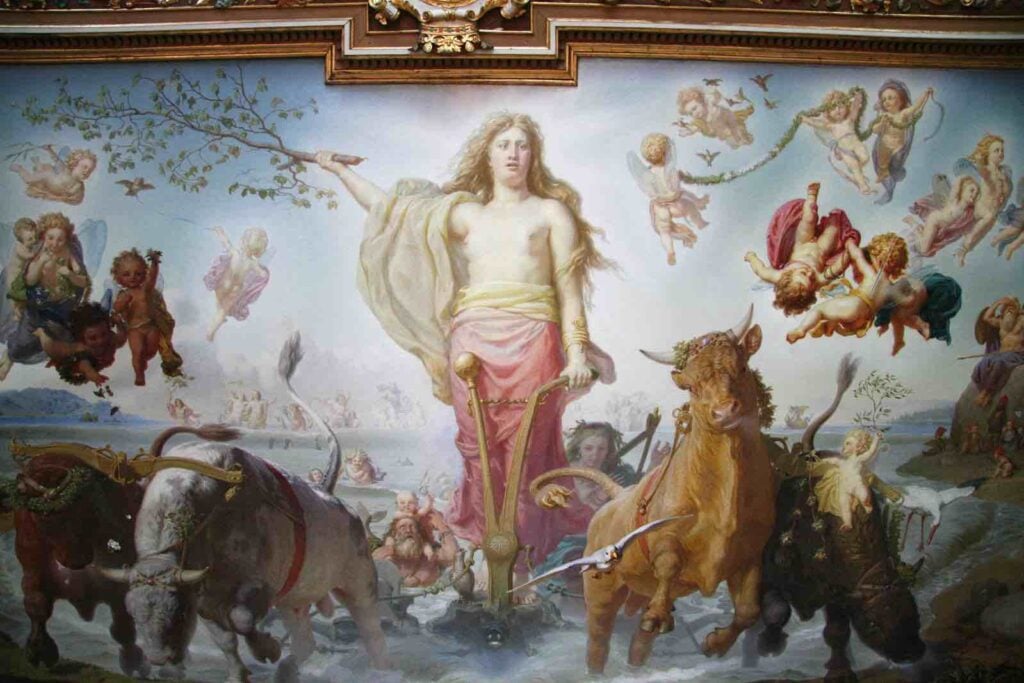 Gefjon ploughs the earth in Sweden by Lorenz Frølich
Gefjon ploughs the earth in Sweden by Lorenz Frølich
Gefjun was a Norse goddess related to agriculture, fertility, abundance, and prosperity. Her identify is derived from the Previous Norse verb gefa which interprets to “give” or “beneficiant” (ge/giva in fashionable Swedish).
She was related to the plow and sometimes depicted with a bunch of oxen pushed by her, and referred to as a shape-shifter that would create land from her plowing.
In line with legend she break up the island of Sjælland from Sweden (known as Svitjod in Viking occasions), and thus created the means for the Danish kingdom:
King Gylfe dominated the lands now known as Svitjod. It’s stated of him that he gave a wandering lady a ploughland as thanks for the pleasure she had given him. It was purported to be so large that 4 oxen might plough it in a day and an evening. However the lady was of the road of the Aesir. Her identify was Gefjon. She introduced 4 oxen from Jotunheimen within the north, they have been sons of hers and a large, and put them to a plough. And the plough took it so exhausting and so deep that the land was minimize free, and the oxen drew the land westward into the ocean, and stood in a sound. There Gefjon set the land and named it Sjælland.
Prose Edda, Snorri Strulorson
After this feat, Odin allegedly rewarded Geifjon together with his son Skjold, after which the 2 settled down in Lejre on Sjælland, the place they established the beginnings of the primary Danish dynasty of kings.
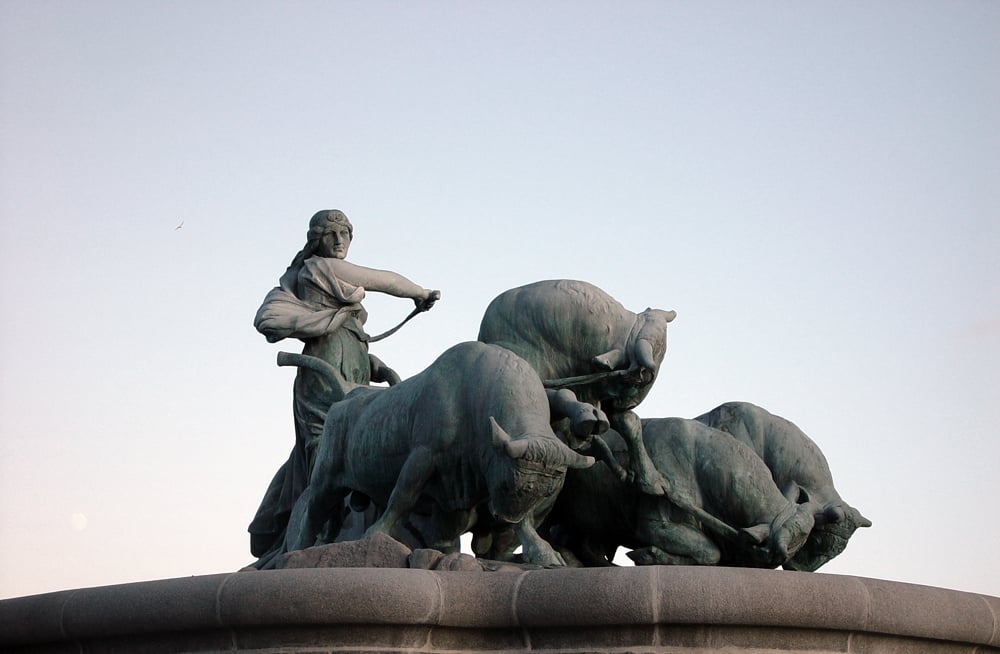 Gefion Fountain (1908) by Anders Bundgaard
Gefion Fountain (1908) by Anders Bundgaard
Gefjon was honored as a supplier of fertility and prosperity for crops and livestock. She was believed to be beneficiant but stern when punishing those that wronged her or broke their vows. Ladies particularly revered her for her safety of feminine independence and virginity.
The fourth is Gefjon, who’s a maiden, and people who die maids develop into her hand-maidens.
Gylfaginnig within the Prose Edda by Snorri Sturluson
Her worshipers would typically make choices at temples devoted to Gefjon for blessings on their crops, households, or companies.
Saga – Goddess of Information & Water
Saga is a Norse goddess of information, divination and water, and is claimed to spend her time with Odin in her house, Sökkvabekkr, the place they drink joyfully.
Sökkvabekk is the fourth, the place cool waves circulation,And amid their murmur it stands;There day by day do Othin and Saga drinkIn gladness from cups of gold
Gylfaginnig within the Prose Edda by Snorri Sturluson
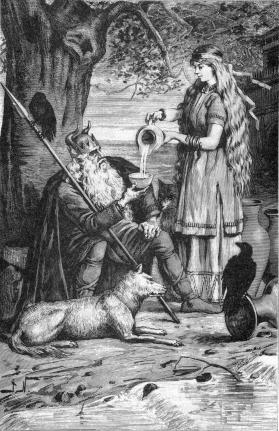 Odin and Saga
Odin and Saga
The story of Saga’s origin dates again to when Odin, the one-eyed god of the Norse deities, sacrificed his eye in trade for information from Mímir. As a reward for his braveness, Mímir gave Odin two sacred objects – a magical mead known as Odroerir and an unnamed valuable stone.
Odin plucked out his personal eye in return for this present and provided it as much as Mímir as fee for his newfound knowledge. In gratitude for Odin’s sacrifice, Mímir gave him Saga as a companion – an attendant of Frigg who would assist him acquire additional information by means of her prophetic powers.
The second is Sága, who dwells in Sökkvabekkr, and this can be a giant dwelling.
Gylfaginnig within the Prose Edda by Snorri Sturluson
Eir – Goddess of Therapeutic & Medication
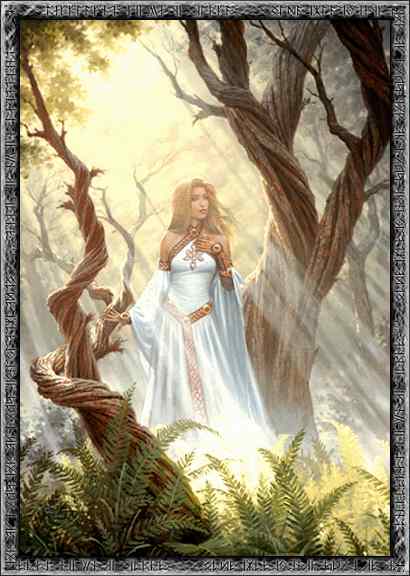
Eir is a mysterious determine in Norse mythology, referred to as the Goddess of Therapeutic. She is related to medical ability and is without doubt one of the handmaidens of Frigg.
The third is Eir: who’s one of the best healer.
Gylfaginnig within the Prose Edda by Snorri Sturluson
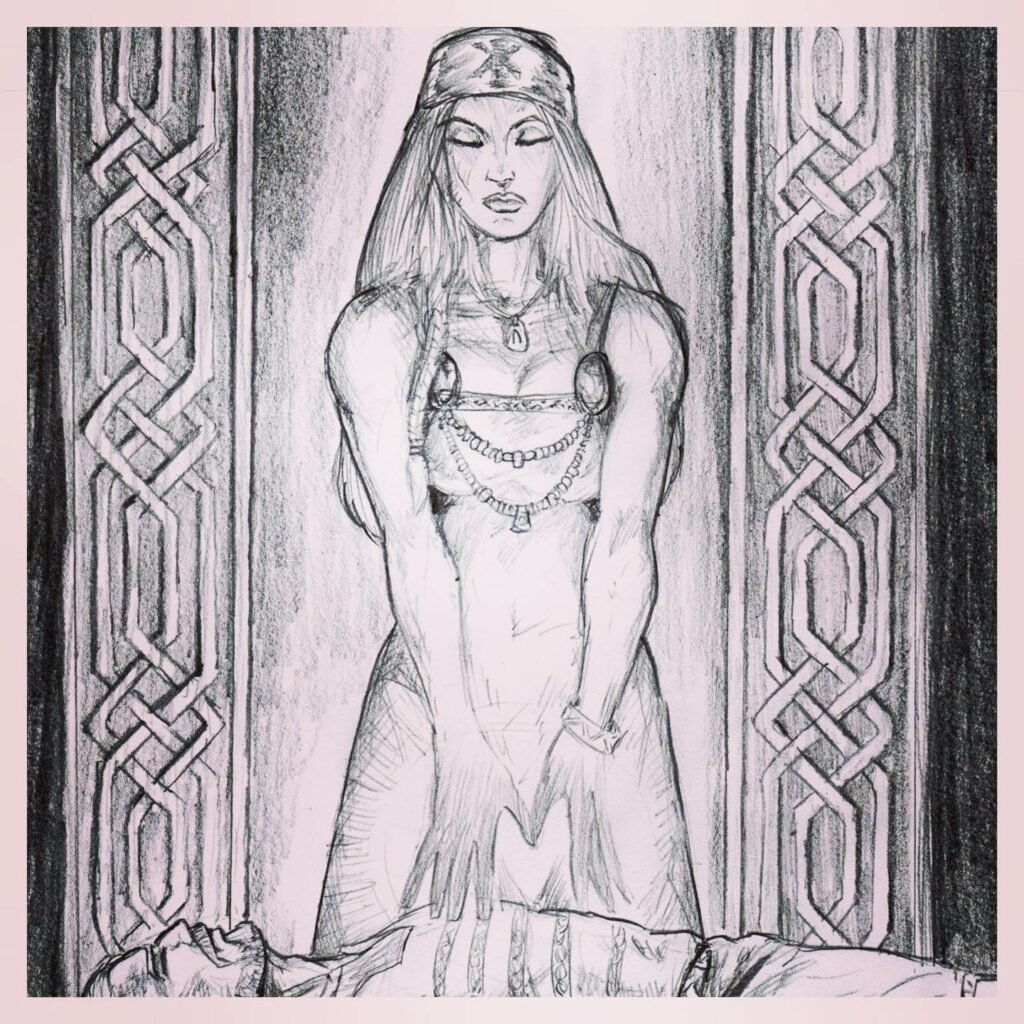
Eir’s identify interprets to imply “assist, mercy, clemency” and she or he turned a patron deity for all Norse healers.
Her hill of therapeutic Lyfjaberg was stated to be the place she used her magic powers to heal the sick and wounded.
Sjöfn – Goddess of Sexual Need
The Norse have been no strangers of affection and fervour, so its no shock that there are quite a lot of goddesses related to the guts’s wishes. One in all them is Sjöfn, who was related to love and sexual need, and referred to as the goddess of ardour and marital concord, encouraging relationships to be robust and full of affection.
The seventh is Sjöfn, who’s keen on turning males’s and ladies’s hearts to like, and it’s from her identify that love is known as Sjafne.
Gylfaginnig within the Prose Edda by Snorri Sturluson
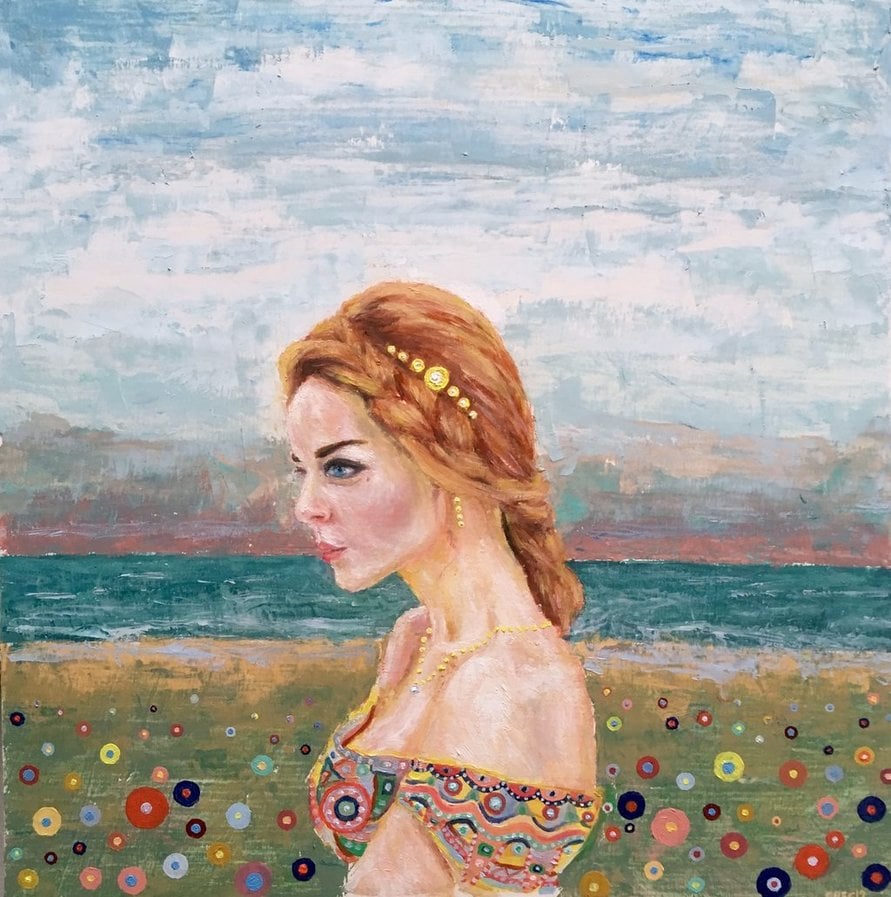
In line with fantasy, Sjöfn was capable of fire up robust feelings in folks, main them to behave on their wishes with abandon. Her symbolism is usually present in artworks that depict her as an exquisite lady surrounded by passionate flames or animals, representing the warmth of ardour.
Along with being a goddess of ardour and need, she additionally had associations with friendship and loyalty.
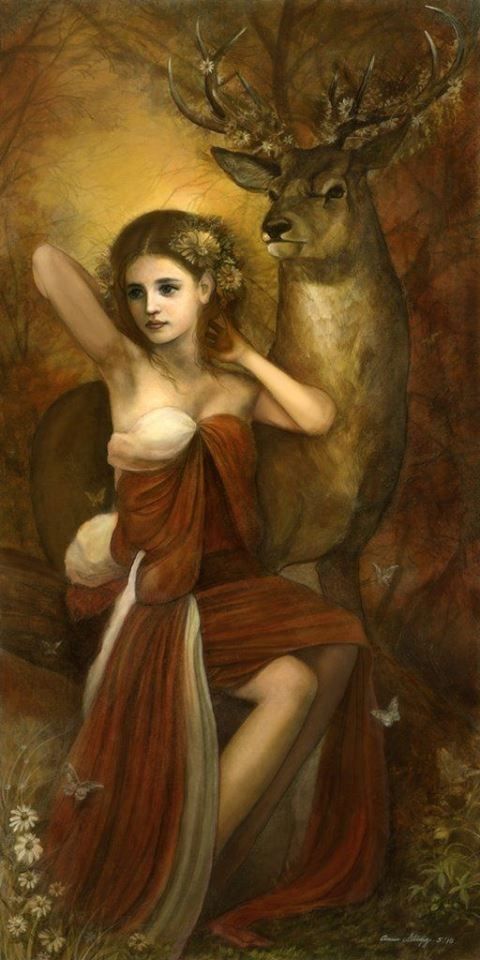
She was believed to be the protector of these whose voices have been silenced for his or her views or for being too younger or too previous. Sjöfn’s affect is also seen in issues referring to fertility and household life.
Lofn – Goddess of Kindness, Love & Marriage
Lofn is maybe the foremost Norse goddess of affection, as she has given identify to the phrase itself (Lofn = Love). She is understood for her kindness and willingness to bless even marriages dealing with obstacles of some type, and is typically known as the “Goddess of Forbidden Love” due to her willingness to go in opposition to societal norms.
She additionally has associations with wrath, as she doesn’t take kindly to those that would deny love or stand in the best way of real love.
The eighth is Lofn, who’s type and good to those that name upon her, and she or he has permission from Allfather or Frigg to deliver collectively women and men, it doesn’t matter what difficulties could stand in the best way; subsequently “love” is so known as from her identify, and likewise that which is far cherished by males.
Gylfaginnig within the Prose Edda by Snorri Sturluson
Her worshipers sometimes prayed to her for assist with issues of the guts and relationships, typically looking for intercession on behalf of these they care about.
Vár – Goddess of Guarantees, Oaths & Marriage
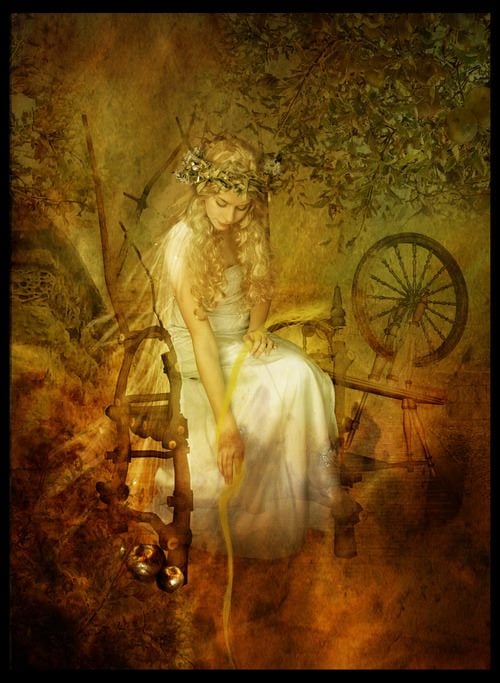
Vár is a Norse goddess related to guarantees, oaths, and marriages which can be constructed on such. She is the keeper of oaths, making certain that folks maintain their phrase and delivering vengeance upon those that violate them.
The ninth is Var. She hears the oaths and troths that women and men plight to one another. Therefore such vows are known as vars, and she or he takes vengeance on those that break their guarantees.
Gylfaginnig within the Prose Edda by Snorri Sturluson
Vár is without doubt one of the Ásynjur (goddesses) of Asgard, born from two highly effective deities. Her identify interprets as ‘vow’ or ‘promise’ and she or he listens to agreements made between folks, writing them down in order that they’re stored secure.
In addition to being a goddess of marital vows, she can be believed to be related to paths chosen freely and the implications they carry.
Vör – Goddess of Curiosity, Knowledge & Certainty
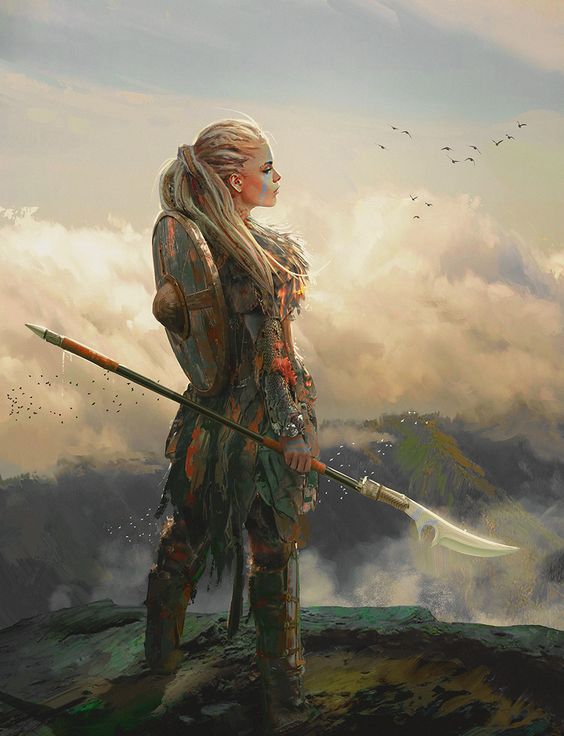
Vör is a Norse goddess identified for her knowledge, curiosity and certainty, and is claimed to have a looking spirit and a capability to affect human affairs. Her identify interprets to “cautious” or “watchful” in Previous Norse, suggesting that she makes use of her knowledge to guard her followers from hurt.
The tenth is Vör, who’s so clever and looking that nothing will be hid from her. It’s a saying {that a} lady turns into vor (ware) of what she turns into clever.
Gylfaginnig within the Prose Edda by Snorri Sturluson
Vör’s area lies in information and understanding, making her a useful useful resource for individuals who search perception into life’s mysteries.
She encourages folks to discover the unknown, take dangers and push boundaries with a purpose to obtain greatness. Her presence was believed to be felt in moments when selections have been made based mostly on instinct as a substitute of logic – typically main in direction of the trail that hearts desired most.
Vör can be related to certainty – offering power and braveness throughout occasions of trial or issue.
Syn – Goddess of Refusal, Safety & Guardian of Valhalla
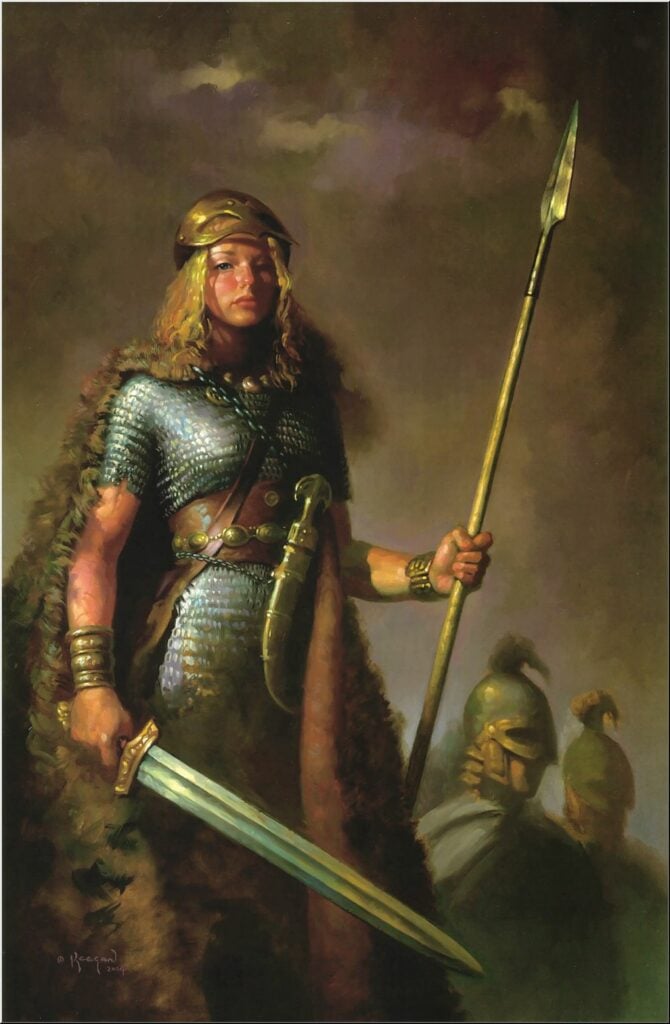
Syn is a robust Norse Goddess of defensive refusal and safety. She is without doubt one of the Æsir and guards the doorways of Frigg’s nice corridor, Sessrumnir. Syn has been related to Valkyries, that are feminine figures who select those that will die in battle and cause them to Odin’s corridor in Valhalla.
Syn was known as upon by Frigg with a purpose to defend her son, Baldr, and she or he symbolizes power, braveness, and the ability of refusal.
The eleventh is Syn, who guards the door of the corridor, and closes it in opposition to those that are to not enter. In trials she guards these fits by which anybody tries to utilize falsehood. Therefore is the saying that “syn is about in opposition to it,” when anybody tries to disclaim ought.
Gylfaginnig within the Prose Edda by Snorri Sturluson
Her presence on the doorways of Valhalla ensures that solely those that are worthy could enter the halls of the fallen.
Hlín – Goddess of Safety & Surveillance
Hlin is sometimes called the goddess of safety and surveillance, and is related to defending people from hurt, offering comfort and luxury in occasions of want, and making certain that justice is served.
Along with her protecting position, Hlin can be related to marriage, childbirth, and child-rearing.
The twelfth is Hlín, who guards these males whom Frigg needs to guard from any hazard. Therefore is the saying that he hlins who’s forewarned.
Gylfaginnig within the Prose Edda by Snorri Sturluson
Hlin’s identify will be translated as “protector” or “guardian”, and in some tales, Hlin was additionally seen as a counselor or adviser to different Aesir gods equivalent to Odin.
Snotra – Goddess of Knowledge, Politeness, Refinement & Respectability
Snotra is a Norse goddess related to knowledge, politeness, refinement and respectability. She is described within the Prose Edda as being “clever and courteous”, and is seen as a protector of information and therapeutic.
The thirteenth is Snotra, who is sensible and courteous. After her, women and men who’re clever are known as Snotras.
Gylfaginnig within the Prose Edda by Snorri Sturluson
Within the Gautreks Saga, she is described because the mom of Gautrek, who’s the son of Gauti, the primary ancestor of the Geats and Goths, and King of Sviþjoð (Sweden).
We don’t know way more about Snotra, however this hyperlink to the traditional Kings of Sweden ultiamtely offers her a distinguished place within the Norse sagas.
Hel – Goddess of Demise and Ruler of the Damned within the Underworld
Hel is the daughter of Loki, goddess of demise, and ruler of the damned within the Norse underworld.
She is described as a half-living, half-dead being with a pale complexion and a dismal disposition, and resides in her personal realm, referred to as Helheim, the place she guidelines over those that have died from illness or previous age.
Hel is usually depicted as having two faces – one dwelling and one lifeless – to represent her twin nature.
Because the daughter of Loki, the trickster god, and Angrboda, a giantess, and together with her darkish position within the mythological world of the Norse, it’s straightforward to imagine that Hel is a darkish and evil determine.
However regardless of all of this, Hel just isn’t essentially an evil determine; somewhat, she serves as a reminder that demise is inevitable for all mortals and should be accepted with dignity. As such, she has develop into an vital determine in Norse mythology and her complicated duality continues to encourage tales and paintings right this moment.
Sigyn – Goddess of Devotion and Spouse of Loki
Sigyn is a Norse goddess typically related to devotion and loyalty, in her position because the ever-supporting spouse of Loki.
She is understood for her unwavering loyalty to her husband, even when he was imprisoned by the gods for his misdeeds. Sigyn would keep by Loki’s facet when he was chained and subjected to the venom of a snake, catching the venom dripping from the snake above him in her bowl.
Her identify interprets to “victorious lady” or “victory-bringer”, which speaks to her power and braveness in standing by Loki regardless of his wrongdoings.
Regardless of her hyperlinks with the two-faced trickster, or maybe as a result of her timeless loyalty in direction of him, Sigyn was possible an vital determine for the Norse folks and was seen as representing loyalty and devotion even when confronted with adversity.
Fulla – Goddess of Fates and Sister of Frigg
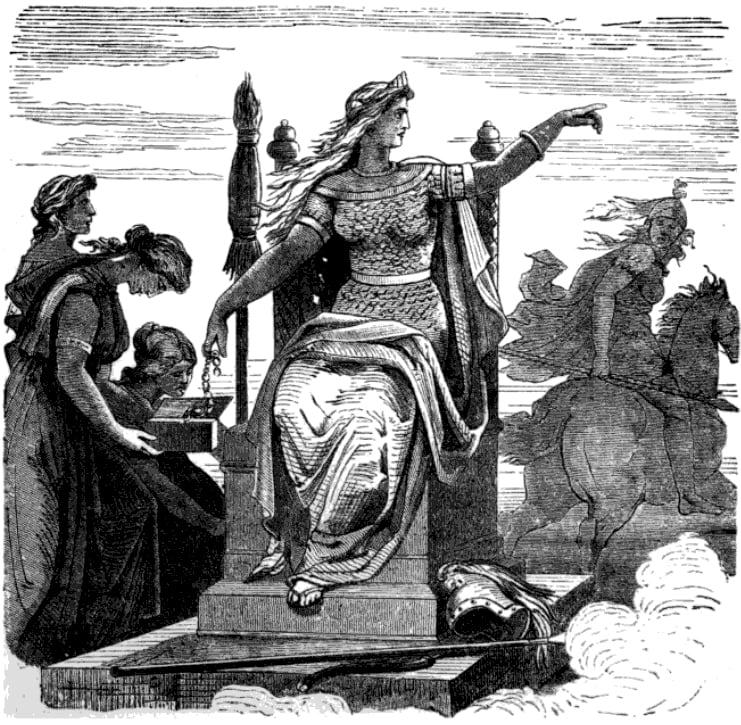 Fulla holding Frigg’s chest
Fulla holding Frigg’s chest
Fulla is a goddess of destiny and the sister of Frigg, and is usually depicted as an exquisite younger lady with lengthy golden hair, carrying a golden ribbon on her head.
She is trusted with the chest of Frigg, that means her possesions, and as such is accountable for defending the household’s wealth.
The fifth is Fulla, who can be a could, she wears her hair flowing and has a golden ribbon about her head; she carries Frigg’s chest, takes care of her sneakers and is aware of her secrets and techniques.
Gylfaginnig within the Prose Edda by Snorri Sturluson
Fulla is claimed to be clever past her years and might supply recommendation on issues each mundane and non secular. In some tales she is even stated to have prophetic powers, with the ability to see into the longer term.
Gna – Goddess of Rumours and Messages
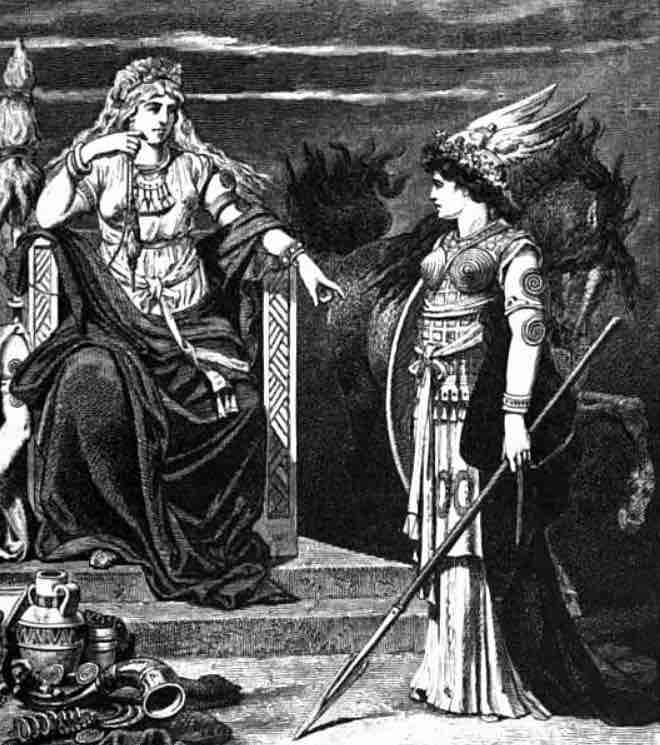 Frigg and Gna
Frigg and Gna
Gna is a Norse goddess related to rumors and messages. She is the messenger of Frigg, the spouse of Odin. Gna is usually depicted as an exquisite lady using on a horse or chariot pulled by two cats.
She is claimed to journey between the realms of Asgard, Midgard and Jotunheim, carrying information from one place to a different. Gna has been described as being each useful and mischievous; she will be each a supply of data and a spreader of gossip and lies.
Her presence in Norse mythology serves as an vital reminder that phrases have energy, and that they need to be spoken rigorously. Gna was seen as a reminder of the implications phrases can have when mispoken.
The fourteenth is Gna, whom Frigg sends on her errands into varied worlds. She rides upon a horse known as Hofvarpner, that runs by means of the air and over the ocean. As soon as, when she was using, some vanir noticed her faring by means of the air. …
Gylfaginnig within the Prose Edda by Snorri Sturluson
Frequent Questions In regards to the Norse Goddesses
Who’s probably the most highly effective Norse goddess?
Frigg may need had the very best standing of the Norse goddesses as spouse of Odin, however probably the most highly effective Norse goddess is probably going Freyja, the goddess of affection, magnificence and fertility, who was additional related to battle, demise, magic and prophecy.
So why was Freyja probably the most highly effective Norse goddess? In line with fantasy, Freya might foresee the longer term, a ability that she taught Odin the all-father. Her powers have been so nice, it was additionally stated that she had the power to deliver folks again from the lifeless if she selected to take action.
Freyja was additionally identified for her means to shape-shift right into a falcon or cat, and will fly by means of the air on her cloak product of feathers. And as a bonus, she had a chariot pulled by cats (!), and rode into battle together with her beloved boar Hildisvini. What’s to not love?
Who’s probably the most lovely Norse goddess?
Essentially the most lovely Norse goddess is probably going additionally Freyja, being the goddess of affection, magnificence, and fertility (amongst different issues). Freyja was stated to be so lovely that she might make even probably the most hardened warriors weak within the knees together with her mere presence.
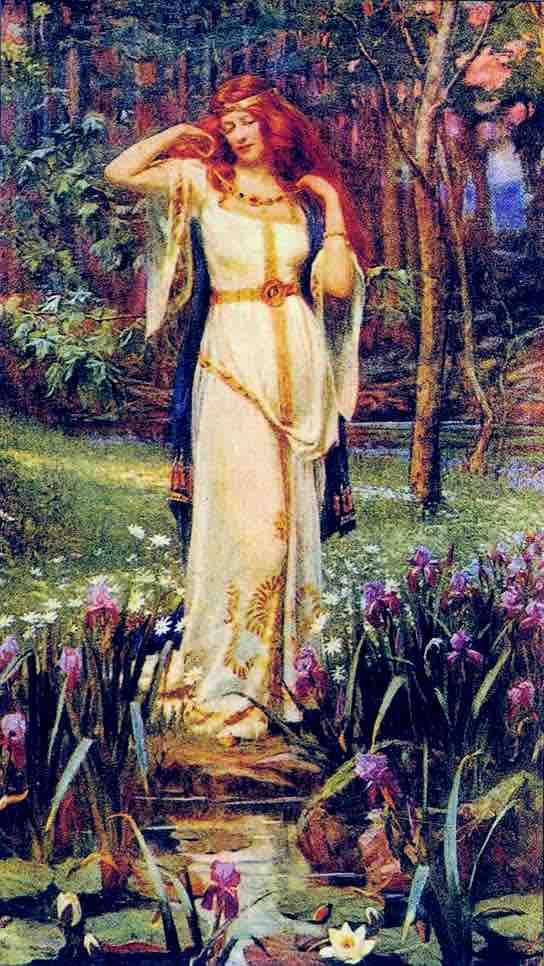 Freya by Penrose
Freya by Penrose
Her magnificence was such that it was stated that she might make even rocks weep with pleasure when she handed them by. Not solely might no man resist her charms, however those that tried to have been additionally stated to be cursed to an eternity of distress.
What number of Norse goddesses are there in whole?
There are greater than 76 Norse goddesses talked about within the Eddas, together with 17 Ásynjur (feminine equivalents of the Æsir, i.e. gods like Odin and Thor), not less than one feminine Vænir (Freyja), 26 Gýgr (feminine equivalents of Jötnar, the giants of the Norse world), not less than 18 Dísir (9 brilliant and 9 darkish), not less than 11 Valkyries (who carried slain warriors from the battlefield to Valhalla and Folkvang), not less than three Norns (who formed the fates of people), and an unknown amount of Fylgjor (protecting spirits for distinguished households) and Hamingja (one other spirit that introduced luck to distinguished households).
Are Freyja and Aphrodite in the end the identical deity?
Freyja and Aphrodite could share many similarities—as lovely blond-haired goddesses of affection, magnificence, and fertility—however Freyja can be a goddess related to battle, demise, future-telling, and magic, whereas Aphrodite shares none of those associations.
Digging deeper, the Norse Freya is usually depicted as carrying a cloak of falcon feathers and accompanied by cats or boars, whereas the Greek Aphrodite is claimed to put on a golden crown, necklace and earrings, and a fragile robe.
Sources:
https://books.google.com/books/about/Edda_de_Snorri.html?id=RD5cAAAAMAAJ
https://www.gutenberg.org/information/598/598-h/598-h.htm
https://books.google.com/books/about/Gautreks_saga.html?id=ta3SmAEACAAJ
Related Posts:
Unleash your interior Scandinavian
Wish to keep in contact with the Nordics?
Subscribe to our e-newsletter to get the most recent Nordic sources, insights, suggestions, hidden gems, and way more.
By subscribing, you comply with get emails from Nordic Perspective. We respect your privateness and you’ll unsubscribe any time.
Source